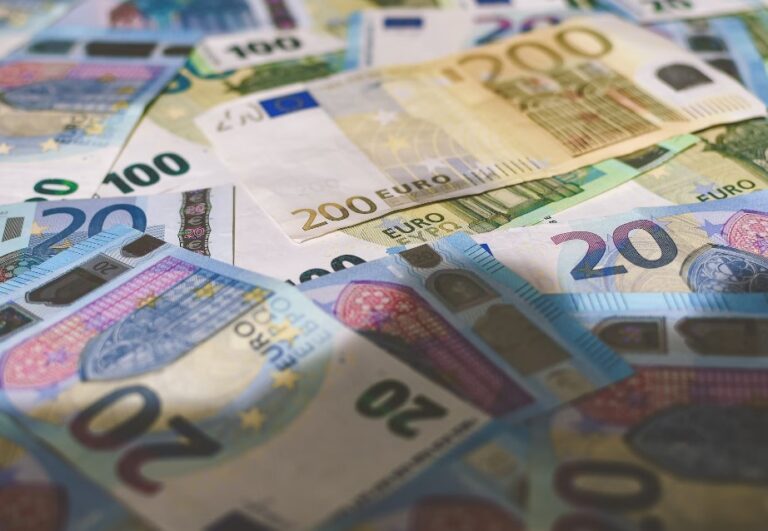Deflation is a term that might sound beneficial to many, especially when we think about the prices of goods and services dropping. In contrast to inflation, where prices go up, deflation sees them going down. This means the currency you hold increases in purchasing power—you can buy more with the same amount.
On the surface, deflation appears to be a win for consumers. Who wouldn’t appreciate more buying power? But the picture is more complex. While consumers might benefit in the short term, other sectors of the economy, like borrowers and certain financial investors, may face challenges.
Borrowers, for instance, find themselves repaying loans with money that now holds greater value than when they borrowed it. Similarly, those in financial markets betting on rising prices might find themselves at a loss.
Table of Contents
The causes of deflation
Several factors can drive an economy toward deflation:
- Reduced demand for goods and services: When people and businesses cut back on spending, whether due to economic uncertainty, loss of income, or other reasons, the demand for goods and services decreases. With less demand, prices tend to drop;
- Increase in the supply of money: Contrary to what one might assume, an overabundance of money in the economy, without a corresponding increase in goods and services, can lead to deflation;
- Technological advancements: As technology advances, production often becomes more efficient and less costly. These cost savings can lead to reduced prices for consumers, contributing to deflationary pressures;
- Debt reduction in the economy: When large amounts of debt are paid off or written off, the amount of money circulating in the economy can decrease, leading to deflation.
The effects of deflation
Deflation doesn’t just change the price tags on goods; it ripples through various aspects of the economy. Here’s a breakdown of its effects:
- On consumers:
- Increased purchasing power: The immediate and perhaps most noticeable effect of deflation on consumers is the enhanced value of their money. Simply put, they can buy more with the same amount;
- Delay in consumption: If consumers expect prices to continue falling, they might postpone purchases. Why buy something today if it’ll be cheaper tomorrow? This behavior can further intensify deflationary pressures.
- On businesses:
- Reduced revenue and profit margins: With falling prices, the revenues of businesses can shrink. Coupled with fixed or slowly adjusting costs, their profit margins can get squeezed;
- Reluctance to invest: Uncertainty about future prices can make businesses hesitant about investing in new projects or expanding. They might also delay hiring or even reduce their workforce.
- On the economy:
- Stagnation: A significant reduction in consumer and business spending can lead to economic stagnation, where growth grinds to a halt;
- Increased unemployment: As businesses cut back on investment and hiring, job losses can mount;
- Potential for a deflationary spiral: This is a vicious cycle where decreasing prices lead to reduced spending, which in turn pushes prices down even further. Such spirals can be challenging to break and can lead to prolonged economic downturns.
Measuring deflation
To quantify and track deflation, economists and policymakers use specific indices:
- Consumer Price Index (CPI): This index measures the average change in prices paid by urban consumers for a basket of goods and services over time. A declining CPI indicates deflation. It’s a key metric because it reflects the cost of living for consumers;
- Producer Price Index (PPI): PPI tracks the average change in selling prices received by domestic producers for their output. It provides insights into the cost pressures faced by producers. A falling PPI can be an early sign of deflation as it indicates that producers are receiving less for their goods, possibly passing those decreases onto consumers.
Both the CPI and PPI are essential tools for gauging the inflationary or deflationary tendencies in an economy, helping policymakers respond appropriately.
Policies to counteract deflation
Governments and central banks recognize the potential dangers of unchecked deflation and typically implement a range of policies to counteract its effects:
- Monetary policies:
- Lowering interest rates: by reducing interest rates, central banks make borrowing cheaper. This encourages spending by businesses and consumers, aiming to boost demand and raise prices;
- Quantitative easing: This involves central banks purchasing long-term securities to increase the money supply and lower interest rates further. The goal is to stimulate economic activity and curb deflationary pressures.
- Fiscal policies:
- Government spending: By increasing its expenditures on public projects, infrastructure, and services, the government can directly inject money into the economy, boosting demand;
- Tax Cuts: Reducing taxes leaves consumers and businesses with more disposable income. The hope is that they will spend this extra money, increasing demand and countering deflation.
- Other economic stimulus measures: These could include direct financial assistance to individuals or sectors hit hardest by deflation, incentives for businesses to invest, and initiatives to boost consumer confidence.
The pros and cons of deflation
Deflation, like most economic phenomena, has its upsides and downsides.
Benefits:
- Lower prices for consumers: The most evident advantage is that consumers can buy more with the same amount of money;
- Debt relief: For those not in debt, deflation can make saving money more attractive. Additionally, in a deflationary environment, the real value of debt can decrease, which can benefit savers and those without significant liabilities.
Drawbacks:
- Reduced consumer spending: If people expect prices to keep falling, they might hold off on making purchases, stalling the economy;
- Business uncertainty: Companies might find it hard to plan for the future if they expect their revenues to keep declining. This can lead to reduced investments and layoffs;
- Potential for economic downturns: In severe cases, the cycle of falling prices and reduced spending (a deflationary spiral) can lead to prolonged recessions or even depressions.
Leggi anche: Disinflation: what is it and how does it work












